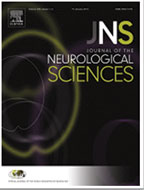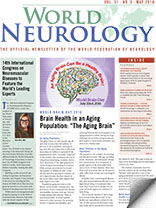By John D. England, MD
Editor-in-Chief

John D. England
On February 1, 2016, the World Health Organization (WHO) declared that the Zika outbreak in the Americas is a Public Health Emergency of International Concern (PHEIC). This recommendation was based upon the growing concern that Zika virus infection is linked to the increasing number of cases of neonatal microcephaly and other neurological conditions such as Guillain-Barré syndrome (GBS). As of April 6, 2016, the Zika virus has been reported in 62 countries or territories, and is circulating in 39 of them. Of great concern is the fact that the geographical distribution of the virus has steadily and rapidly expanded. Since Zika virus is transmitted to humans by Aedes mosquitoes, there is great concern that the virus outbreak will continue to spread to other countries and territories. Although most people who are infected with Zika virus appear to have few symptoms, the latest evidence suggests a clear association of the virus with a congenital syndrome of brain malformation/microcephaly, and an increased incidence of GBS and other neurological conditions (e.g., myelitis and meningoencephalitis). The Zika virus congenital syndrome (microcephaly) has been seen in French Polynesia and especially in Brazil, where several thousand cases have been reported. Thirteen countries or territories have reported an increase in the incidence of GBS in conjunction with the wave of Zika virus outbreak. Assessment of this growing body of information has led the WHO to conclude that Zika virus is a cause of microcephaly and GBS. WHO has called for a coordinated global response to help affected countries and health care providers deal with the crisis. Management of the complications of Zika virus infection is already straining health care systems in affected regions, and there is a serious lack of financial resources available.
 WHO has convened several meetings to address the Zika virus epidemic. Several WHO peer-reviewed guidelines have been generated. WHO is posting these guidelines and is providing frequent updates about the Zika virus situation on its website. WHO provides the most comprehensive global information on Zika virus, and I encourage everyone to visit the WHO website, www.who.int/en/ for the most current information.
WHO has convened several meetings to address the Zika virus epidemic. Several WHO peer-reviewed guidelines have been generated. WHO is posting these guidelines and is providing frequent updates about the Zika virus situation on its website. WHO provides the most comprehensive global information on Zika virus, and I encourage everyone to visit the WHO website, www.who.int/en/ for the most current information.
The Pan American Health Organization (PAHO) is also working with WHO to provide informational resources and support for this crisis. Of course, increased surveillance, enhanced vector (mosquito) control measures, development of reliable diagnostic tests, and vaccine development are priorities.
Collaborative interdisciplinary research on Zika infection and its neurological complications is already being organized, but funding is severely lacking at this time. As an important first step to enhance research collaboration and provide for transparent data sharing, the Neurovirus Emerging in the Americas Study (NEAS) (www.neasstudy.org/en/home/) is being organized and is supported by an approved Johns Hopkins Medical Institutions IRB protocol. Researchers are encouraged to visit the NEAS website for additional information. The situation is rapidly evolving; therefore, all information is subject to modification as we learn more about this emerging crisis.
Since the Journal of the Neurological Sciences represents the World Federation of Neurology, I encourage clinicians and investigators to provide us with the newest information available on this evolving crisis.
Of course, new and interesting information about other neurological diseases is always published in our journal, and in this and the previous issue we have selected new “free-access” articles for our readership.
- Kyum-Yil Kwon, et al provide data on a retrospective study comparing 28 patients with classic essential tremor (ET) and 24 patients with typical Parkinson’s disease-tremor dominant type (PD-TDT). Although there was some overlap in motor and non-motor symptoms, the authors found certain specific features which helped to distinguish ET from PD-TDT. ET presented with relatively symmetric tremor, whereas PD-TDT presented with asymmetric tremor. Leg tremor was seen only in patients with PD-TDT, and this was the most specific tremor sign to differentiate the two groups. Interestingly, the presence of head tremor did not differentiate between the groups. Patients with PD-TDT exhibited more frequent non-motor symptoms compared to patients with ET. The most common non-motor symptoms experienced by the patients with PD-TDT were hyposmia, orthostatic dizziness, REM sleep behavior disorder (RBD), urinary frequency, and memory disturbance. The authors concluded that evaluation of both motor and non-motor symptoms/signs is necessary to distinguish ET and PD-TDT. Kyum-Yil Kwon, Hye Mi Lee, Seon-Min Lee, Sung Hoon Kang, Seong-Beom Koh, Comparison of motor and non-motor features between essential tremor and tremor dominant Parkinson’s disease, J. Neurol. Sci. 361 (2016) 34-38. www.jns-journal.com/article/S0022-510X(15)30082-4/fulltext
- Ari Shemesh, David Arkadir and Marc Gotkine reviewed the clinical characteristics of 346 patients with amyotrophic lateral sclerosis (ALS). They found that finger flexion was relatively preserved when compared to finger extension. In many patients with ALS, finger flexion was only mildly affected when finger extension was severely affected or even paralyzed. Along with the well-known “split hand” sign (ie, preferential involvement of lateral intrinsic hand muscles), the authors have described another useful clinical clue which suggests the possibility of ALS.Ari Shemesh, David Arkadir, Marc Gotkine, Relative preservation of finger flexion in amyotrophic lateral sclerosis, J. Neurol. Sci. 361 (2016) 128-130. www.jns-journal.com/article/S0022-510X(15)30095-2/fulltext
- Oscar H. Del Brutto and Hector H. Garcia provide an excellent review on the history of human Taenia solium (the pork tapeworm) cysticercosis. Neurocysticercosis is a major cause of seizures and neurological disability throughout the world, and this article succinctly reviews how our understanding of this disease has evolved. O.H. Del Brutto, H.H. Garcia, Taenia solium cysticercosis-The lessons of history, J.Neurol.Sci. 359 (2015) 392-395.
- Rachel Ventura, Laura Balcer, Steven Galetta, and Janet Rucker from New York University School of Medicine provide an overview of eye movement abnormalities that can occur with concussion. Sports concussions are increasingly recognized as a serious problem with potential long-lasting neurological sequelae. As such, there is a great need to understand concussion and to develop sensitive tests to identify and evaluate patients with concussion. Since ocular motor function is controlled by diffuse and multiple areas of the brain, neuro-ophthalmologic tests can provide a sensitive means of assessing brain dysfunction. The King-Devick test, which measures visual performance, is already being used on the sidelines to assess concussion. In this paper, the authors explain how eye movements are compromised by concussion, and how ocular motor assessment tasks can be used to monitor patients. R.E. Ventura, L.J. Balcer, S.I. Galetta, J.C. Rucker, Ocular motor assessment in concussion: Current status and future directions, J. Neurol. Sci. 361 (2016) 79-86.
